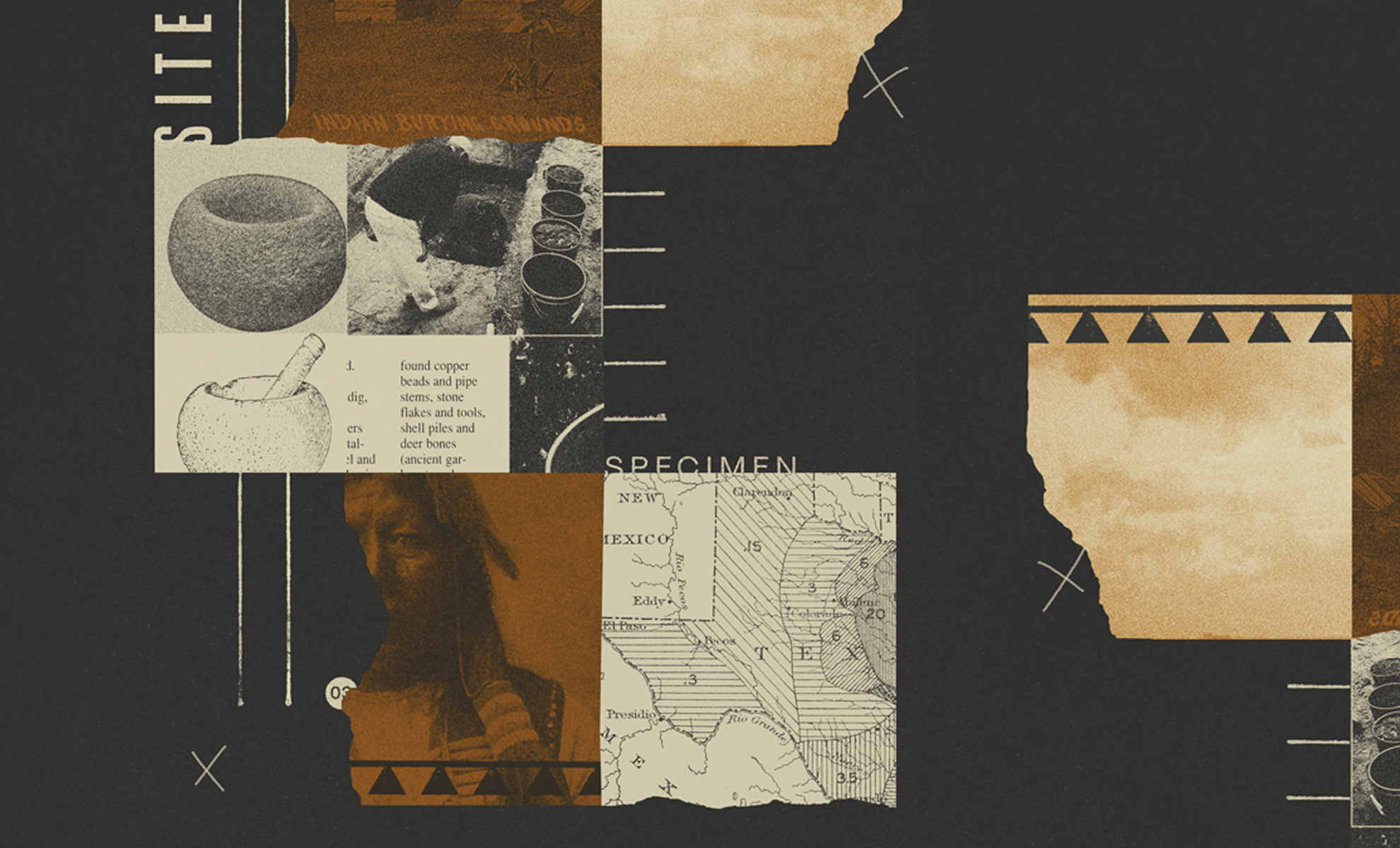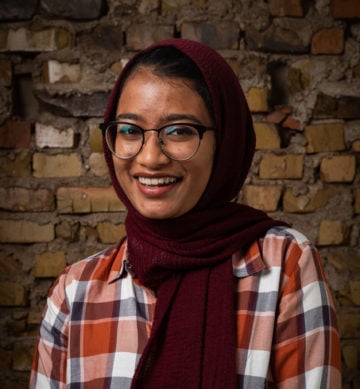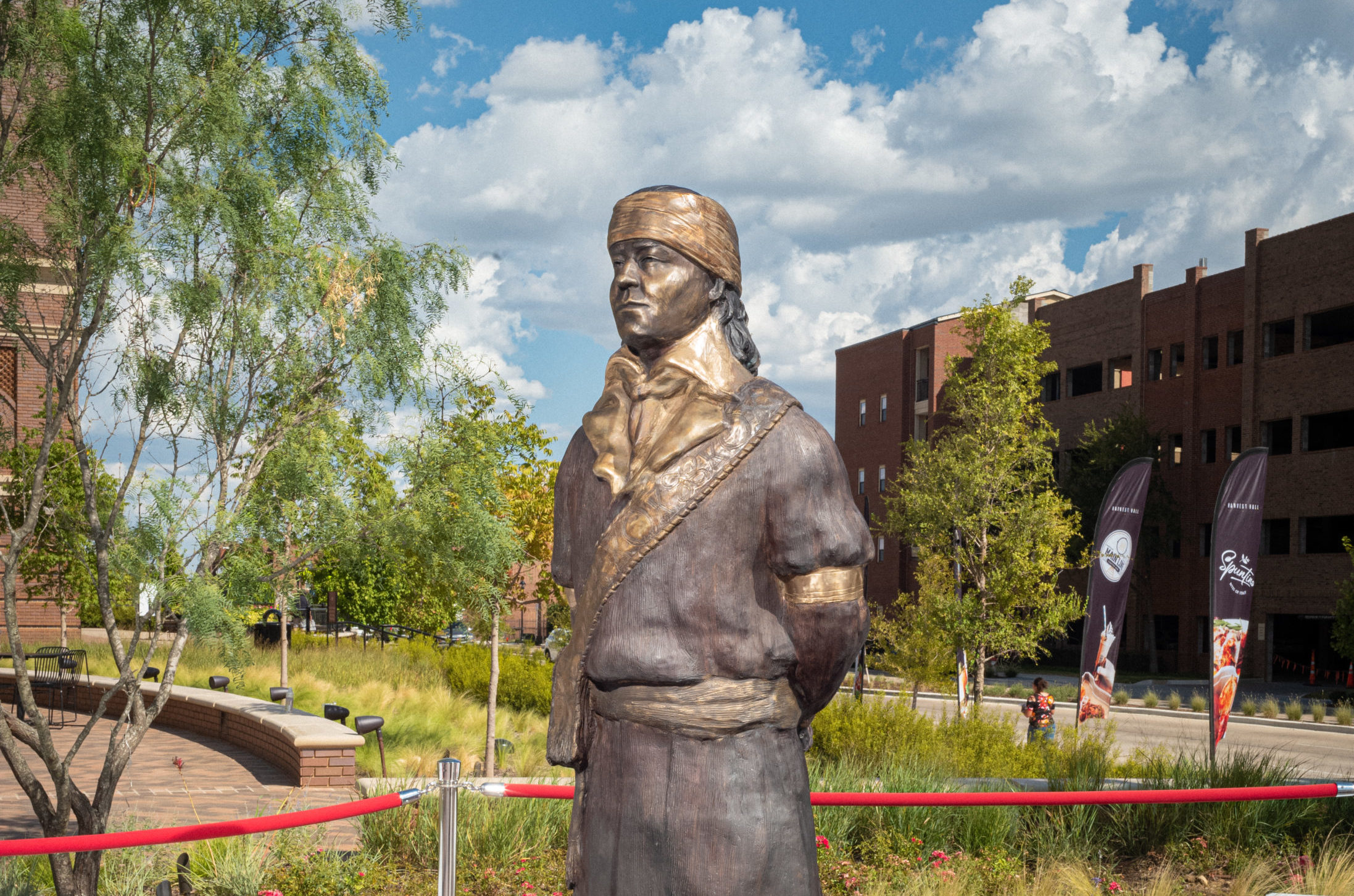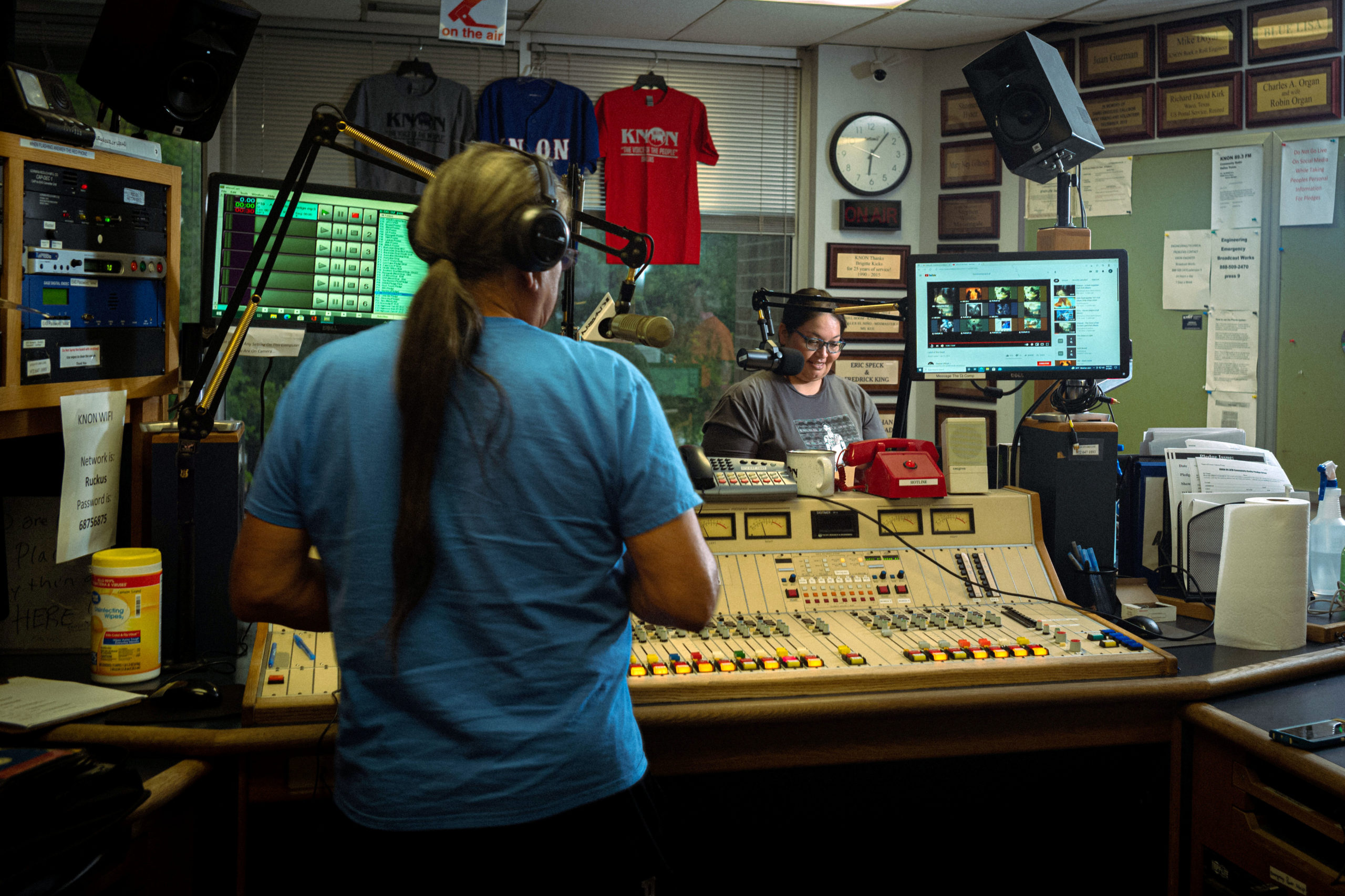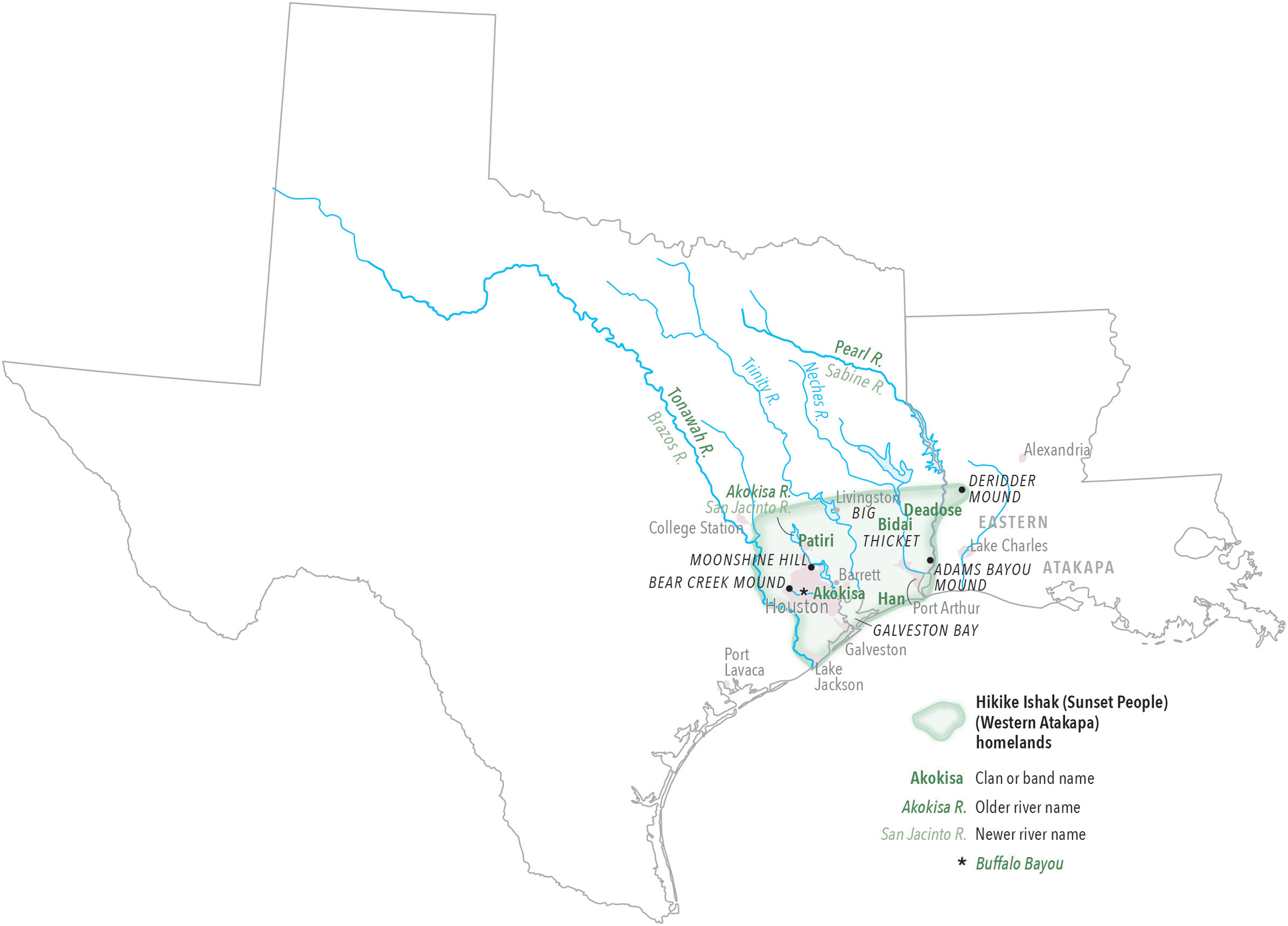Thirty years after Congress passed the Native American Graves Protection and Repatriation Act, only a fraction of human remains held by Texas’ museums and universities have been returned.
By Amal Ahmed
November 16, 2020
Illustrations by J.D. Reeves
Ramón Vásquez can’t tell you exactly how many of his relatives have been dug up. He can’t tell you how many are now stored in climate-controlled rooms at museums or universities. And he can’t tell you how many more will be unearthed when shovels hit the ground at construction sites in and around San Antonio’s historic colonial missions. Vásquez is a member of the Tap Pilam Coahuiltecan Nation, a tribe that still calls South Texas and Northern Mexico home. When Spanish colonizers arrived in the region in the 18th century and met the Coahuiltecan tribes, they didn’t violently force them off their lands or kill them on sight—for the most part. Instead, the Spanish built missions like San Juan and Valero, more commonly known as the Alamo, and attempted to convert Indigenous communities to Catholicism. Some were then buried on the mission grounds as Catholics.
By the 20th century, archeology and anthropology students in Texas were taught that the Coahuiltecan were extinct. In fact, a popular university-level textbook published in 1961 and widely used for several decades stated that the tribes had “dwindled to almost nothingness” and been “destroyed by disease or absorbed into the Mexican population.”
Yet the Coahuiltecan remain. The tribe has never been recognized by the federal government and the State of Texas doesn’t have an official process to designate tribal recognition, leaving Vásquez and other tribal members in a legal limbo when it comes to repatriating the remains of their relatives. Under a federal law called the Native American Graves Protection and Repatriation Act (NAGPRA), passed in 1990, institutions such as museums and universities that receive any federal funding and hold Indigenous remains in their collections are required to repatriate them to the tribes they belong to. But while such institutions are required to work with federally recognized tribes, NAGPRA does not mandate they work with tribes without recognition. Therein lies the rub: In Texas, many of the remains belong to tribes that are not federally recognized, which means that federal law doesn’t apply to them. People like Vásquez are left to the whim and goodwill of university and museum curators.
“It is kind of like if a scientist went and dug up your grandmother and put her in a repository—and then asked you to fund reburying her.”
Vásquez is the executive director of American Indians at the Spanish Colonial Missions, an educational and advocacy nonprofit working to dispel the myth that the tribe has disappeared while pushing for the return of its ancestors’ bones—whether dug up through archeological research excavations or, more recently, during construction projects. Vásquez says the work takes much of the organization’s time. “It was never meant to be our job,” he says. “But it sure did turn into that.”
Thirty years after Congress passed NAGPRA, the vast majority of human remains haven’t been returned. Instead, collections have been moved to climate-controlled facilities while institutions muddle through the process of identifying thousands of remains and tribes struggle to find the funding needed to repatriate and rebury their relatives. The NAGPRA office doesn’t track the number of remains actually reburied, but of the nearly 200,000 remains held in federally funded collections nationally, only 40 percent have even gone through the process—a low standard indicating that the institutions that own the collection have, at the very least, attempted to consult with tribes to determine the cultural affiliation of said remains. In Texas, the proportion is lower: Just a quarter of the state’s nearly 5,000 Indigenous remains have gone through the NAGPRA process. The Texas Archeological Research Laboratory (TARL) at the University of Texas at Austin, by far the state’s largest archeological repository, holds the remains of 2,000 Indigenous people, the vast majority “culturally unaffiliated” with any tribe. To date, the remains of only two people have been returned from UT’s collections.
Until Congress passed NAGPRA it was legal and, for the most part, academically acceptable for archeologists and anthropologists to excavate burial sites and conduct experiments on human bones, pottery, and funeral items, or to use them as teaching tools. “Native people were considered archeological objects, like pots,” says Jackie Swift, a member of the Comanche and Fort Sill Apache tribes and the repatriation manager at the Smithsonian’s National Museum of the American Indian. “In the 19th century, there was this epiphany, like, ‘Oh no, the Indians are vanishing, so we need to take everything we can in order to preserve them in museums.’” This, despite the fact that the U.S. government engaged in ethnic cleansing and outright genocide to remove Indigenous communities from their homelands.
In the 1980s, archeologists were often hired by private developers for cultural resource management prior to construction projects, meaning that tribes to whom remains belonged may never have known that their ancestors had been dug up. NAGPRA provided the first legal pathway for Indigenous peoples to reclaim human remains held in these collections. The law required institutions to take human remains and funeral objects out of display cases or research labs and to create inventories of them. Tribal representatives could then access those inventories, make claims for repatriation, and finally rebury their dead. For the first few years, NAGPRA exclusively allowed federally recognized tribes to make repatriation claims but was later revised to allow others, like the Coahuiltecan, to submit claims when no federally recognized tribe claimed the remains.
But ultimately, universities and museums have the final say on whether or not to engage in consultation with tribal nations. When remains are culturally unaffiliated—meaning that the curator of a collection can’t definitively determine which tribe the remains should be returned to—progress comes to a virtual standstill. The lack of affiliation, whether it’s because the remains are deemed too old or there’s no concrete evidence, can be used as a reason to deny consultation—particularly with non-federally recognized tribes.
This July, the Texas Archeological Research Laboratory turned down a repatriation request from another Coahuiltecan community, the Miakan Garza Band, which claimed that UT’s collections included several of their ancestors who lived in what is currently Hays County. Brian Roberts, the center’s director, said that the band hadn’t provided enough evidence. When the tribe appealed the decision to the university president’s office, Carlos Martinez, the former chief of staff, wrote that “the law requires that certain standards be met, and, in this case, the facts simply cannot justify the requested repatriation. The law does not allow repatriation simply because a group is willing to rebury the remains.” Then, after pressure from faculty, staff, and students, UT reversed course in late September and announced it would seek approval from the National Parks Service to transfer control of the remains to the tribe.
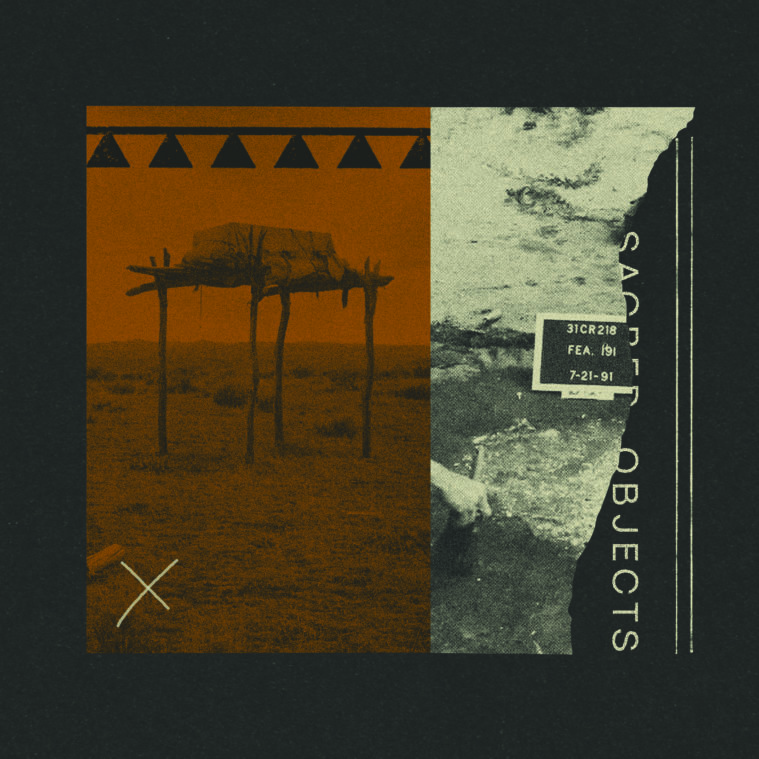
“UT, which has repatriated remains in the past, has sought all along to follow best practices and federal law,” J.B. Bird, the university’s spokesperson, said in a statement. “Consulting the Native American Graves and Repatriation Act Review Committee offers another way to do that.”
Despite its flaws, NAGPRA is championed by Indigenous peoples as a crucial, if incomplete, first step toward undoing centuries of plunder. But it’s been a slow process. The inventories, required after the law was passed, were not due until 1995, says Melanie O’Brien, the manager of the NAGPRA program, and “that was the extent of the proactive requirements on a museum [or university].”
Many institutions are still making up for decades of poor record-keeping on remains that ended up in their collections. Southern Methodist University in Dallas, for example, submitted its required inventories in 1995, only to discover in 2013 that some of the collections, which had been closed due to budget cuts or put on loan to other institutions, were never reported to the federal government. It took two more years to raise funding and complete the inventory and determine the cultural affiliation of the remains, says Sunday Eiselt, an anthropology professor who oversees SMU’s repatriations.
Then there’s the issue of where the remains came from. Some universities, like Texas A&M, have dedicated NAGPRA coordinators, typically professors, who work on determining cultural affiliation. “People do not randomly bury their dead; even today, burial grounds are sacred sites. They can tie you to a homeland and define your identity,” says Heather Thakar, A&M’s NAGPRA coordinator. It’s her job to piece together the identity of the remains held at A&M. But in the past, some were donated to universities by private citizens who offered up little information. Fifty years ago, for example, a rancher donated the bones found on his land to A&M for research. No location as to where they were found was provided and no other information exists, making it nearly impossible to pin down any tribal affiliation. Carbon dating or DNA testing would destroy parts of those bones, so archeologists and tribal officials are usually hesitant to conduct such analyses. Without a sense of where the human remains were dug up or how old they might be, it’s difficult to know which tribes must be consulted. In some cases, the funerary objects buried with the dead can provide clues, but those items often disappear to private collections or are sold in lucrative black markets.
“It’s a mess. There’s no two ways about it,” Thakar says. “We were grave robbers.”
Even when remains can be identified, it doesn’t always mean that they can be reburied properly. In 2010, the anthropology department at Stephen F. Austin State University, in Nacogdoches, consulted with the Caddo Nation of Oklahoma and determined that all of the school’s remains and funerary objects belonged to the tribe, having been excavated from burial mounds in Caddo homelands in East Texas. But today, those remains are still on shelves at the university, despite having been legally repatriated on paper.
“The Caddo let us know that they wanted to rebury the remains and the vessels, and their practice had been to rebury them as close to where they came from as possible,” says Jerry Williams, a sociology professor at the university who was involved with the repatriation process. But the original burial mounds were in a public area, which could have become a target for looting yet again. A viable reburial option has yet to be worked out and would require funding for a new burial site or purchasing a plot in an existing historic cemetery. “That’s one of the real weaknesses in NAGPRA,” Williams says. “It is kind of like if a scientist went and dug up your grandmother and put her in a repository—and then asked you to fund reburying her.”
In 2016, the Miakan Garza band successfully repatriated one set of human remains from Texas State University in San Marcos that had been unearthed during construction on campus. Initially, the remains were labeled culturally unaffiliated. But Maria Rocha and Mario Garza, the husband-and-wife team who run the nonprofit Indigenous Cultures Institute, say that their relatives have lived in the San Marcos region for thousands of years, leaving little doubt in their minds as to the affiliation of the remains.
But during the review process, tribal representatives from the Caddo Nation and the Mescalero Apache questioned why the Miakan Garza Band had seemingly sprung up overnight—Garza and Rocha founded the Indigenous Cultures Institute in 2006, but before that, there was virtually no record of the band having existed. “We have claimed that area for quite some time,” Holly Houghten, the tribal historic preservation officer for the Mescalero Apache Tribe, said in a 2015 meeting. “It’s documented in the historic record. There’s treaties that are signed.”
Pushback from federally recognized tribes leaves non-recognized tribes at a disadvantage, as they constantly have to prove their authenticity or attempt to meet federal standards for recognition—a process that can take 30 years or more. Institutions can also choose to write them off, reducing the number of tribes they must reach out to while also reinforcing colonial definitions of Indigeneity.
But Bryant Celestine, the Alabama-Coushatta Tribe’s historic preservation officer, says that repatriation runs into the issue of tribal sovereignty. “The ultimate goal for us as a tribe is to try and get all human remains out of collections, because they are not artifacts,” he says. “But [non-federally recognized tribes] have no right to insert themselves into government-to-government consultations.” Celestine and other tribal historic preservation officers have often advocated against institutions working with non-federally recognized tribes, which is one of the reasons that the Tap Pilam were entirely locked out of discussions regarding human remains unearthed at the Alamo during renovations last year. According to the Alamo Trust, the nonprofit that manages the Alamo’s operations, a third of the remains have been identified as “Coahuiltecan-speaking Indigenous” people, and a few more as “possibly” Coahuiltecan.
“People do not randomly bury their dead; even today, burial grounds are sacred sites. They can tie you to a homeland and define your identity.”
However, no Coahuiltecan representatives were invited to participate in the Alamo Mission Archaeology Advisory Committee. Only federal tribes, like the Caddo, Alabama-Coushatta, Seminole, Cheyenne, and Arapaho, were asked to join. The remains at the Alamo do not fall under the jurisdiction of NAGPRA, since the Alamo Trust doesn’t receive federal funding, but the organization said in a statement that it is consulting with the federal tribes “in the spirit of NAGPRA.”
In February, Ramon Vásquez and the Tap Pilam sued the Alamo Trust as well as the city of San Antonio, the Texas Historical Commission, and the Texas General Land Office, which are all involved in redevelopment plans for the area. The lawsuit claims that excluding the Tap Pilam from repatriation consultations was discriminatory and denied them the right to perform religious reburial ceremonies for their ancestors.
“It’s like you’re saying, ‘All these Indians are the same,’” Vásquez says. Not all of the federally recognized tribes involved with the advisory committee had historical ties to the Alamo or the wider San Antonio region, but some tribal representatives wrote to the Alamo Trust reiterating that they view the Tap Pilam as a “socially constructed group,” which mean it does not have the same legal standing as federally recognized tribes. A federal judge dismissed the suit in late September.
The remains that have been unearthed at the Alamo are only a few hundred years old; Vásquez says they could even belong to his great-great-grandmother. “It’s kind of upsetting that [the federally recognized tribes] would take the position that they have the sole authority over our people, when that recognition is a political act,” he says. “It doesn’t determine who’s Indigenous.”
Yet to date, the Tap Pilam have repatriated dozens of human remains, some through NAGPRA and some through channels like the Catholic Archdiocese, which oversees many of the historic Catholic burial grounds where Indigenous people were buried.
For all its flaws, NAGPRA does provide a pathway for repatriation that simply didn’t exist 30 years ago. “NAGPRA is the floor, not the ceiling,” says Shannon Keller O’Laughlin, an attorney and the executive director of the Association on American Indian Affairs. “There is no limitation set by NAGPRA—you can go above and beyond what it requires.”
This month, the California Legislature passed a bill that would expand the right of non-federally recognized tribes to repatriate remains in the state. Since 2001, the state has had its own version of NAGPRA: State-funded institutions are required to create inventories and consult with California Indian tribes who seek to repatriate and rebury the remains of their ancestors. The state law was intended to account for the fact that many tribes in California lost their federal tribal status through the forced assimilation policies of the 20th century. It also covered state-held collections, which wouldn’t have been covered by NAGPRA. The law expands the number of tribes that qualify for state recognition through the Native American Heritage Commission and require universities to hire a coordinator to consult with tribes.
In Texas, the state government has barely addressed tribal affairs since 1989, when the Legislature dissolved the Texas Indian Commission, ignoring recommendations from the state’s Sunset Commission to restructure and strengthen the agency.
Recognizing tribes in Texas could go a long way in addressing long-standing inequities in issues like education, housing, and access to health care. At UT-Austin, faculty and students are now urging the administration to step up and engage with Native communities: In September, the Native American and Indigenous Studies Program presented a land acknowledgement to the UT’s Faculty Council, which represents more than 3,700 professors and staff members. The proposal asks the university to recognize that the campus sits on stolen land and to commit more resources to Native American students. The program has also asked for UT to repatriate all the remains held at the Texas Archeological Research Laboratory.
Despite the bureaucracy that has held up repatriation for so many years, Indigenous people like Ramon Vásquez intend to keep doing the work. Vásquez doesn’t want his son and grandson to have to repatriate and rebury their ancestors. He’d like to finish the task during his lifetime. The process is a constant reminder, he says, that even in death, Indigenous people are considered less than human.
“This has gotten so bad for our community that people are changing their wills, from being buried to being cremated,” he says. “They don’t ever want to be dug up.”
Indigenous Affairs stories are produced with support from the Economic Hardship Reporting Project.
Correction: The original version of this story misstated the number of remains that had been repatriated by the Miakan Garza Band from Texas State University. The number is one, not six. We regret the error.
